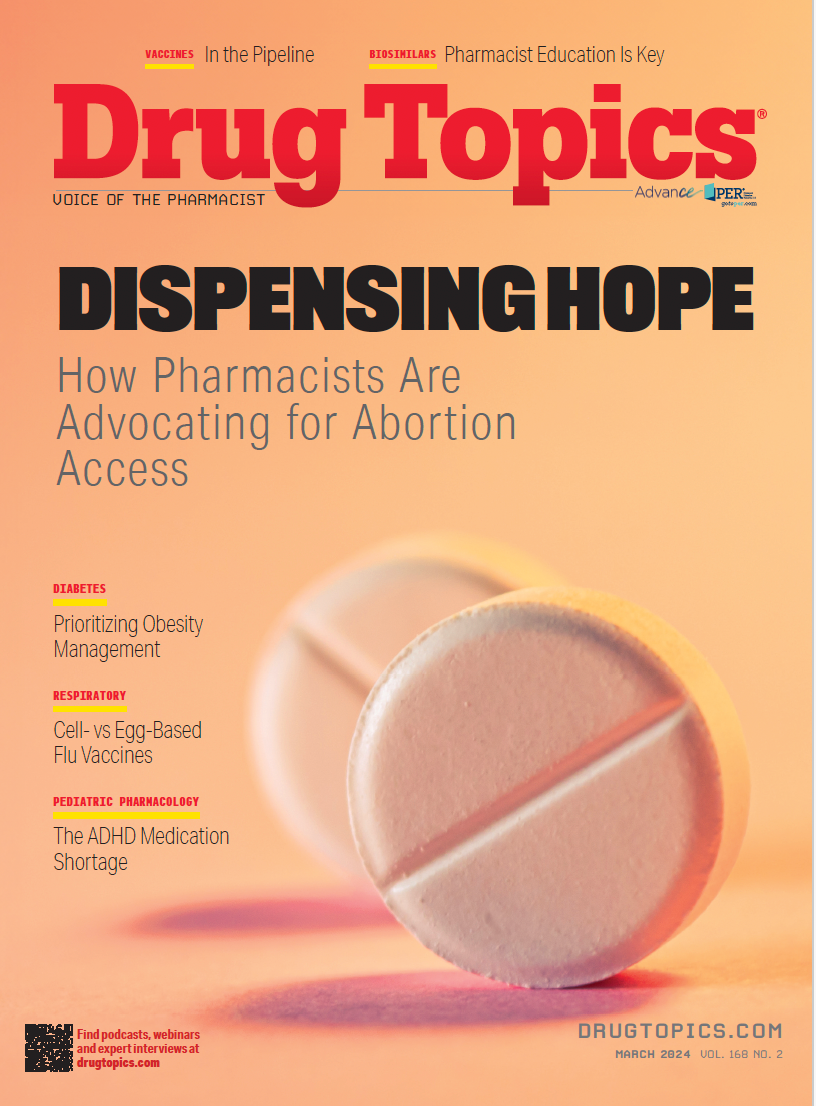DefenCath Approved to Reduce Incidence of Catheter-Related Bloodstream Infections in Adults
This new drug utilizes the bactericidal properties of taurolidine and the bloodthinning effects of heparin to maintain catheter patency.
In November 2023, the FDA approved DefenCath (taurolidine, heparin), a combination catheter lock solution therapy consisting of the thiadiazinane antimicrobial agent taurolidine and the anticoagulant heparin. This approval is specifically for the prophylaxis of catheter-related bloodstream infections (CRBSIs) in adults undergoing chronic hemodialysis through a central venous catheter.1 DefenCath aims to address the elevated risk of CRBSIs in this patient population by utilizing taurolidine’s bactericidal properties and integrating heparin’s blood-thinning effects to maintain catheter patency.2
Graphic of kidneys / magicmine - stock.adobe.com

Efficacy
In the LOCK IT-100 phase 3 trial (NCT02651428), 806 patients (median age, 63 years; 63% White; 58% men) were randomly assigned 1:1 to receive DefenCath or a heparin comparator as a catheter lock solution post hemodialysis. In total, 98% of patients had hemodialysis 3 times weekly, with 48% having a dialysis catheter placed within 3 months of study commencement.
The clinical adjudication committee (CAC) confirmed and assessed cases of CRBSI.3 The CAC-adjudicated CRBSI rate was 2.3% in the DefenCath group vs 8% in the heparin group, with event rates of 0.13 and 0.46 per 1000 catheter days, respectively, indicating a significant delay in time to CRBSI (P < .001). Patients in the DefenCath group experienced a 71% reduction in CRSBI compared with the heparin group (risk reduction range, 38%- 86%; P = .0006). There were no significant differences in time to catheter removal or catheter patency loss between the study groups, and mortality rates were comparable at 5%.2
Safety
Investigators for the LOCK IT-100 trial assessed safety in 797 adult patients. A 0.3% incidence of heparin-induced thrombocytopenia—a potentially life-threatening clotting condition—was reported; hypersensitivity reactions occurred in 0.5% of patients.1
If either heparin-induced thrombocytopenia or hypersensitivity occurs, immediate discontinuation and proper medical intervention are advised. There was a rare occurrence (0.3%) of a serious treatment-emergent adverse event related to DefenCath involving a single instance of device malfunction deemed possibly related to the drug by the investigator. Common adverse events (≥ 2%) included catheter malfunction, bleeding, thrombocytopenia, nausea, vomiting, dizziness, and chest pain.2
Dosing and Administration
DefenCath is available in single-use vials of 3 mL and 5 mL, with concentrations of 13.5 mg/mL taurolidine and 1000 USP units/mL heparin. The 3-mL vial contains 40.5 mg taurolidine and 3000 USP units/mL heparin; the 5-mL vial contains 67.5 mg taurolidine and 5000 USP units/mL heparin. DefenCath should be instilled into the central venous catheter lumen at the end of each dialysis session and withdrawn before the next. Remaining solution must be discarded, as vials are for single-patient, single-use only.1
Egla Hasimllari, PharmD, is a PGY-1 pharmacy resident at John Dempsey Hospital/University of Connecticut Health in Farmington.
Cassandra Doyno, PharmD, BCCCP, is an assistant clinical professor at the University of Connecticut School of Pharmacy in Storrs.
References
1. Defencath. [Prescribing information]. Berkeley Heights, NJ: CorMedix Pharmaceuticals, November 2023. https://www.accessdata.fda.gov/drugsatfda_docs/label/2023/214520s000lbl.pdf
2. Agarwal AK, Roy-Chaudhury P, Mounts P, Hurlburt E, Pfaffle A, Poggio EC. Taurolidine/heparin lock solution and catheter-related bloodstream infection in hemodialysis: a randomized, double-blind, active-control, phase 3 study. Clin J Am Soc Nephrol. 2023;18(11):1446-1455. doi:10.2215/CJN.0000000000000278
3. FDA approves new drug under special pathway for patients receiving hemodialysis. News release. FDA. November 15, 2023. Accessed November 15, 2023. https://www.fda.gov/drugs/news-events-human-drugs/fda-approves-new-drug-under-special-pathway-patients-receiving-hemodialysis

2 Commerce Drive
Cranbury, NJ 08512
All rights reserved.